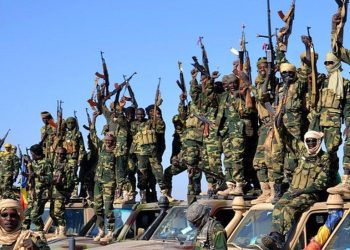- Does the army favour death over life?
On April 30, 2015, a military cadet at the Nigerian Defence Academy (NDA), Kwasu Angulu, died from drowning during the ‘watermanship’ training at the institution. The ECOWAS court, in a ruling in 2017 asked the Federal Government to compensate the deceased’s father, Wing Commander Danladi Angulu, because the NDA failed to provide necessary safety measures and also did not conduct any diligent investigation of the cause of death after the incident.
Was this just an isolated accident, which would thus be excusable? It does not appear so given comments attributed to no less a person than the immediate past Director of Defence Information, Defence Headquarters, Brigadier-General John Agim (Retd).
In a newspaper interview, Agim stressed the rigour of training at the NDA and expressed the incredible view that the military authorities indeed expect a certain percentage of deaths during training, which is why applicants mandatorily sign a bond before being admitted into the NDA. In his words, “I can assure you that we have a robust training that when you come out of it alive, you know that it is not you but God. You can go for several days without food. And for each of our recruitments, there is a percentage expected to die during training. And this could be as much as 15 and 25 percent. That alone shows you that it is no play zone or a boy scout’s lifestyle”.
Was it this mindset that informed the allocation by the NDA of the sum of N100 million for the construction of a cemetery and another N50 million to equip the facility in the 2020 budget proposals? The NDA, it seems, is much more concerned about the dead than the living. For, in the budget, the sum of N50 million was allocated to equip the institution’s hospital. Would it not have been better for the NDA to accord greater priority to equipping and modernising its medical and training facilities, a measure which may help to considerably reduce the rate of casualties during training?
In any case, is it a tradition with militaries across the world to expect such a rather high percentage of deaths during training? It is unlikely. The number of deaths of military trainees is certainly no reflection of either the rigour or the quality of training. Rather, a high rate of deaths during training could be an indication of the degree of underdevelopment of a country’s military. We expect, in the first place, that during recruitment, applicants would have gone thorough medical screening to determine their physical, mental and emotional suitability for the military profession.
Again, there must certainly be several stages of training that provide opportunities for those who do not meet up with expected standards of performance to be dropped. True, the nature of military training is such that deaths in the process may be unavoidable. But this should be the exception largely as a result of accidents rather than being the norm. It is dangerous, in our view, to have the belief, as Agim suggests, that it is normal for a number as high as 15 to 25 percent of military intakes to die in training. Perhaps the NDA needs to comprehensively review its training methods to accord with global best practices.
In any case, we find it curious that the NDA wants to spend N150 million in constructing and equipping its cemetery. We assume that this cost does not include the purchase of land for this purpose; even if it does, the cost is still indefensible as cemeteries do not require elaborate facilities. Moreover, the cemetery is to be constructed internally by the NDA through direct labour rather than through contract award. If this is presumably to save cost, why then is the cemetery still so expensive?













































Padding has taken another high profile dimension. NASS members should ensure that padded budgets are exposed and those responsible face the music.
Should NASS members ignore these revelations, then, the fight against corruption should immediately be consigned to the dustbins.